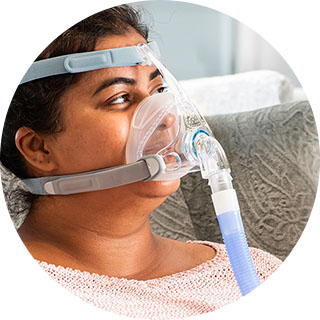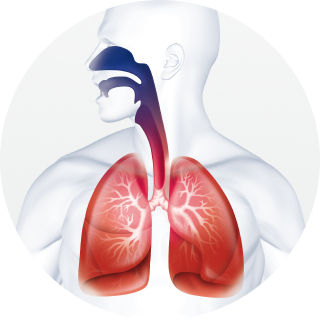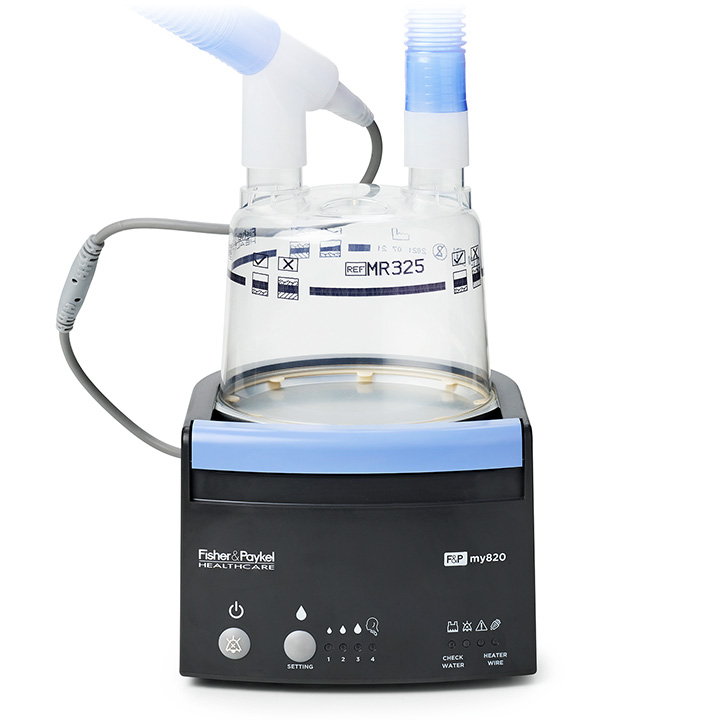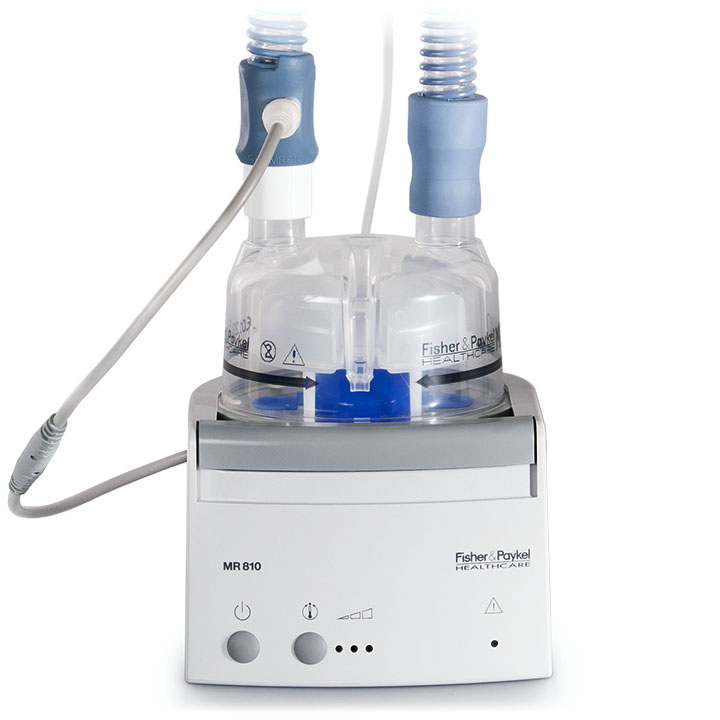Why are heat and humidity important for the airway during noninvasive ventilation?
What is noninvasive ventilation?
NIV refers to respiratory pressure support delivered by a ventilator via a mask. In a home environment, NIV may be used to treat conditions such as chronic obstructive pulmonary disease (COPD).1 Unlike invasive ventilation, the upper airway is not bypassed during NIV, allowing air to be inspired through the nose or mouth.
Challenges for NIV patients in the home
Although the upper airway is not bypassed during NIV, the delivery of cold, dry gas at high pressures or flows can dry the airway lining (mucosa) and may be associated with upper airway dryness or discomfort.2,3,4
Cilia are tiny, hair-like structures that are part of the airway mucosa. They move in a coordinated fashion to help clear contaminants out of the airways. Insufficient respiratory humidification can reduce cilia activity and beat frequency, cause ciliary destruction, and result in cellular damage. These effects can increase mucus viscosity (thickness) and impair mucociliary clearance, leading to secretion retention and airway occlusion.5
Increases comfort and tolerance to NIV.6

Assists natural defense mechanisms in the airway.7,8

Promotes efficient gas exchange and ventilation.6,9

Humidification systems supporting noninvasive ventilation at home

Your universal solution for respiratory humidification with four user-selectable settings.
Contact your local F&P representative
If you have an enquiry about our products, please provide the following information so a Fisher & Paykel Healthcare representative can contact you. For further details on how this information will be used, see below or go to our privacy statement.Manufacturer: Fisher & Paykel Healthcare Ltd
ALWAYS READ THE LABEL AND FOLLOW THE DIRECTIONS FOR USE.
The medical devices on this page are available by prescription only and may not be suitable for you, your condition, or both. Consult your healthcare provider for more information.
F&P is a trademark of Fisher & Paykel Healthcare Limited. For patent information, see www.fphcare.com/ip
